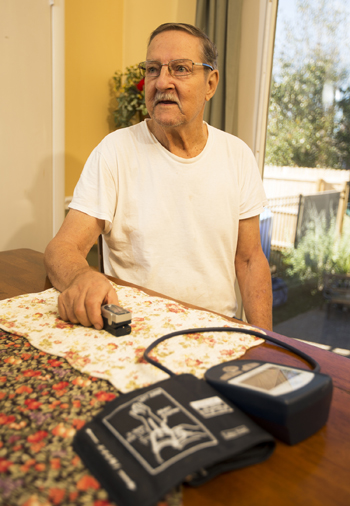In preliminary testing, Vanderbilt Home Care Services (VHCS) has found that Internet-based remote patient monitoring reduces hospital readmissions for patients with congestive heart failure (CHF) who are receiving home nursing visits.

In a 12-month pilot that concluded last June, 38 patients with CHF regularly used health monitoring equipment fitted with wireless digital transmitters, including pulse oximeters (for measuring blood oxygenation), blood pressure cuffs and bathroom scales.
VHCS required a physician order for this monitoring, with each patient’s doctor setting parameters for desirable ranges and rates of change for the biometric readouts from each type of device.
Data from the devices were immediately transmitted to VHCS, alerts were tripped and a nurse intervened by phone or in person when readouts appeared to slip beyond the set parameters. The patients otherwise received the standard course of home nursing visits.
Over the year, the 60-day hospital readmission rate among these 38 patients was 13 percent, far lower than the readmission rate of 45 percent seen among 64 CHF patients followed by VHCS in the 12 months prior to the pilot.
“It tells me that tele-monitoring in conjunction with good home nursing care helps patients fare better and has the potential to keep them out of the hospital,” said Joe Garafola, administrator for VHCS, who set up the program with Julia Triplett, MSN, MBA, director of staff development with VHCS. (Connie Lewis, N.P., a heart failure nurse practitioner with the Vanderbilt Heart and Vascular Institute, coordinated patient referrals from VHVI.)
Referring providers could stipulate when they wanted to be contacted by VHCS about out-of-range readings. Providers also had access to the complete live data set via the Internet.
Triplett said remote monitoring initially involves assessing whether the patient is cognitively able to operate the monitoring devices.
A considerable number of patients were deemed ineligible, and those who did qualify often needed periodic re-coaching in the proper use of the devices.















